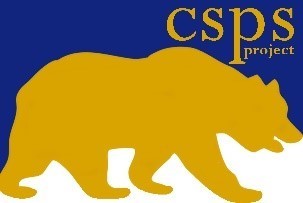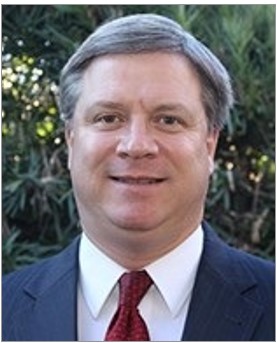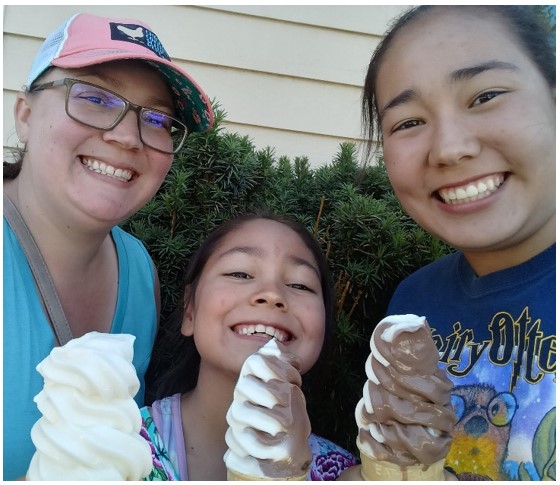CSPS Project Newsletters

In this edition:
Change is Possible at the State of California
A Shining Example, no. 2
Welcome to the next installment of A Shining Example. In the spring edition of this newsletter we began telling the story of how the California State Payroll System (CSPS) Project came to be. The story began in the 1960s and we left off at the point when a decision was made by PPSD leadership to conduct a feasibility study for a new payroll system (Late 90s, early 2000s). What happened next? Well, that study was not alone! Standing in support were leaders experienced in operations, human resources, project management, and technology management, and it was a vision to behold. A literal vision. Imagine if you will, the State Controller’s Office (SCO) as a streamlined, technology-adept deliverer of accurate and timely personnel and payroll services that includes quality customer service. Do these words sound eerily familiar?
This vision was the foundation of the current CSPS vision that the project adheres to today. After solidifying the vision, the leadership jointly developed a business plan. The first step in the plan was data collection. Change leaders collected data to determine where, why, and how the present state evolved. To gather the data, they reviewed the division’s core responsibilities, held brainstorming sessions with staff, surveyed external and internal customers, and interviewed members of different teams. This equipped the change leaders with the knowledge of what to change, how to change it, and where and what type of resistance they could expect to encounter. The results of their data collection were compiled into an Executive Action Plan—a blueprint designed to provide direction for optimizing SCO operations.
What’s a blueprint without architects? A blueprint without architects is simply a cool desktop background. Prior to implementing this plan, they ensured they had complete buy-in and support from SCO executive leadership. Meet the architects – Those executives committed to being the “Tone at the Top,” exhibiting behaviors to model the intended change. They achieved this by supporting and championing this change in many ways, including making sure change leaders and their teams could meet deadlines. Did these actions work? Were the blueprints stolen? Find out in our next installment of A Shining Example coming to your inbox this fall!

Chris Maio, Project Director
The Director’s Corner
It is with great disappointment that I share the news that the California State Payroll System (CSPS) Project has concluded vendor negotiations without awarding a contract. The procurement remains active, so I am restricted from sharing specific details. What I can say is that we were unable to come to terms agreeable by the state and the vendor. I can assure you this was the right thing to do, and our steering committee agreed without dissent. While the project schedule can expect a delay of roughly 12 months, we plan to re-use most of our procurement documentation to curtail the delay as much as possible. Once we have determined our procurement path forward, we will be able to speak of our revised schedule in greater detail.
The CSPS Project team will continue to provide updates and communicate any developments regarding the project as we work to design a solution that aligns with the state's needs and objectives. Should you have any questions, please send them to CSPSHelp@sco.ca.gov and we will respond as best as we can with the understanding that some procurement related questions will go without detailed responses. But rest assured, we will continue charging ahead, all of us, to continue moving toward our goal of implementing a new state-wide personnel and payroll system.
Thank you,
Chris Maio
Team Member Spotlight – Welcome New Team Members

Helaina Medrano, CSPS Business Analyst
Helaina Medrano joined the California State Payroll System (CSPS) Project’s Functional Team this spring as a business analyst. She has a human resources (HR) background and has worked for the State of California 19 years and counting. HR work has been Helaina’s passion ever since her first permanent state job as an Office Assistant in a HR transaction office. In fact, Helaina is a returning employee to SCO having worked eight years in the California Leave Accounting System (CLAS) unit. While working there she maintained the system and provided system training to HR staff. SCO has always felt like home and she is excited about being part of the project that is modernizing the personnel and payroll services for the whole state. Having worked for seven state agencies as an HR professional coupled with her passion for continuous improvement, Helaina is the perfect addition to the CSPS Functional team.
“I’m excited to be a part of the functional team and learn from the other knowledgeable business analysts. I feel very lucky to be here and to be part of the CSPS team.”
Outside of her professional endeavors, Helaina stays active in the great outdoors with her family. If she is not working out with her husband or watching her daughter play sports, you may find her strolling on the sand near the coast. One thing you might not know about her is that on the first day of eighth grade at a new school she met her husband! She had just moved to Sacramento from the Bay Area. This photo was taken recently of them at The Friends Experience in San Francisco. It looks like they each found their lobster.

Merissa Ramoz, Business Analyst
The CSPS (California State Payroll System) Project is thrilled to have Merissa Ramoz join the Functional Team as a business analyst. She brings a wealth of experience working in Personnel Transactions in various roles: Timekeeper, Personnel Specialist, Personnel Supervisor I & II, and Manager. While working as a Subject Matter Expert for CSPS, she heard about the business analyst role and knew it was time for a career change. With extensive HR experience and a strong desire to make a positive impact developing requirements for the new system, Merissa is a dynamo. Having been a user of the current system for almost 13 years she knows the limitations first-hand and the difficulties it presents for HR offices.
“I am excited to be part of the CSPS team that will modernize the HR system to not only give employees more tools and resources, but to also make work processes more streamlined for agency and campus HR staff.”
Outside of work Merissa stays busy with her two daughters (ages 14 &10), two dogs, five goats, seven pigs, and over 100 chickens! The family recently moved to a ten-acre property and started a small farm growing vegetables and flowers, and fruit from over 50 fruit trees. Something you may not know about Merissa is her love of the Italian language. She studied it for four years in high-school and for the past year has used Duolingo to improve her language skills. Her daughters joined her on this linguistic voyage, one choosing to learn Spanish and the other, Japanese. In the future Merissa and her daughters plan to travel to Italy, Spain, and Japan. This way, they will never be without a translator.
CSPS Project Update
As summer wains, the California State Payroll System (CSPS) Project continues to move forward. With heavy hearts, the project has concluded vendor negotiations without awarding a contract. The state and the vendor were unable to come to agreeable terms. This decision was made with full support from the project steering committee and was the right t thing to do. While this decision is difficult to bear and will result in some delay (likely a year or so), the CSPS Project is already finding ways to re-use the bulk of their procurement documents to reduce the delay as much as possible. Be on the lookout for a revised project timeline coming out next month.
The Functional Team continues to gain momentum by building partnerships with other work streams in preparation for the next project phase. The team is focusing on use case inventory and use case narrative development. A use case is a written description of how users will perform tasks using the new solution. It outlines, from a user's point of view, a system's behavior as it responds to a user request.
They are also gathering information related to reports and interfaces. Currently, they are working through 853 reports and approximately 800 interfaces. This work is being done in partnership with the Personnel and Payroll Services Division and the Information Services Division at the State Controller's Office, and CalHR. A truly collaborative work effort!
Thus far, the Technical Team has been primarily focused on finding and fixing data that does not fit their models. Starting with over 1 million data errors discovered, they are down to just 28k! They have finished reviewing all data critical for running monthly payroll and have moved on to lower priority data. The data team continues to sync and monitor the data weekly for any new errors.
As the project nears its later phases, the Technical team is committed to expanding to meet the project’s current and projected partner needs. This includes hiring for the Development team. The Development team will help manage the data exchanges between the State Departments and the new system, along with a client services and reporting team to manage documenting our commitments to the new data exchanges and any reporting transitions.
The Organizational Change Management (OCM) Team has been busy with the continued development of their customer relationship management tool, officially named Stakeholder Connect. Stakeholder Connect is the portal through which stakeholders and Department Agency Readiness Team (DART) Sponsors and Liaisons will connect with their OCM Agency Change Experts (ACEs). Stakeholder Connect also houses resources and tools for Department Liaisons to use for project readiness activities.
Agency Change Experts are working with their departments to identify their DART team members by early next year. This includes identification of each department’s Sponsor, Liaison, SMEs and Coordinators. The training team is nearing completion of the Liaison Toolkit, one of the most important and comprehensive tools DARTs will be able to access through Stakeholder Connect. A new ACE will be joining the OCM team in early October adding even more expertise to the critical functions of this team.
We are dedicated to keeping you updated on progress and milestones. If any questions or inquiries arise, please feel free to reach out to us at CSPShelp@sco.ca.gov. We also invite you to explore our website at: California State Payroll System (CSPS) Project
New to the CSPS Project?
Let’s catch you up on the basics!
The California State Payroll System (CSPS) Project will modernize the human resource management, travel and business expense, and payroll system used by approximately 300,000 state government employees to provide accurate and timely personnel and payroll services with quality customer service. SCO has developed and modified the current systems over time as the business requirements became more complex. As a result, SCO must exert an enormous amount of effort to maintain and modify the current systems to meet the ever-changing needs of California.
The objectives of the project are focused on providing user-friendly information that is validated timely to reduce rework. This includes enabling greater employee and manager self-service functionality for ease of use, such as online view capabilities for payroll, employment history, and tax information to name a few. Additionally, it will provide a user-friendly interface for all human resource and payroll transaction specialists who input and interact with the system daily.
There are six primary capabilities in scope of the project:
- Personnel Administration which includes management of employee records and status changes
- Benefits Administration
- Time and Attendance Administration, which includes entering and approving time and attendance
- Payroll including calculating and processing payroll
- Position Control Administration
- Travel and Business Expense
Each of the areas within scope affects roughly 45 different state processes that will span many business rules and requirements.
The Back Page
A note from the editor - A huge shout-out to those readers who responded to the “super-short survey” in the spring edition! I will do my best to incorporate your feedback into future newsletters. I’d love to hear more.
Q: What’s anonymous and takes less than 30 seconds to complete?
A: This survey
